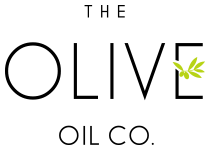The basic procedure making olive oil has remained the same for thousands of years: harvest the olives at the right time, crush them into paste, separate the solids from the liquid components, and further separate the vegetable water from oil. The method of extraction has a distinct effect on the flavor and ultimate quality of the olive oil. The mechanical process has undergone numerous changes and refinements that have increased both productivity and quality.
The archaic but still used method of stone grinding and matt pressing has the drawback of intensive labor and lower yield compared to modern methods. Olives are crushed to paste by revolving millstones, the paste is spread on woven mats, stacked in a press and squeezed until the fluid component is recovered in basins underneath the press.
The vegetable water sinks and the oil is skimmed off the top. The mats are emptied of the pits and skins and “re-buttered” with fresh olive paste to repeat the process. This method results in very sweet oil with slightly higher levels of acidity. The mats impart a distinct flavor from the cultures that grow with their repeated use. Many old timers insist that this flavor is an absolute necessity to make fine olive oil but considered a defect by proponents of the modern method, proving once again that beauty is in the eye of the beholder.
The machinery and technique of olive oil extraction continues to evolve, promising continued improvement in both quality and efficiency.
The continuous method—the most widespread method used in the world today. Olives enter the mill at one end and oil comes out the other. The olives are crushed by hammer mill and the paste is pumped to a malaxer where it is warmed and mixed until the oil begins to separate. The resulting paste is pumped to a centrifuge where the solids are separated from the liquids and the vegetable water and oil are further separated in a final centrifugal process. There are many variations on this basic theme that involve less heat and less washing of the oil. Because the polyphenols that account for the flavor in olive oil are much more soluble in water than in oil reducing contact with water preserves the flavor of the oil.
The Integral method is virtually identical to the continuous method with the notable difference that the olive stones are removed from the flesh before the oil and water are extracted. This method has existed for thousands of years but the cost and time to manually remove the stones prior to extraction were cost prohibitive. In addition, there is a slight loss in yield. Proponents of the Integral method produce less bitter oil with fewer toxins and waxes as well as the added economic advantage of ending up with four valuable and marketable products instead of one: highest quality extra virgin olive oil, highly nutritious olive water, dry olive flesh for all-vegetable cattle feed, and inedible oil-bearing stones for fuel. The benefit of eliminating environmental degradation from large amounts of processing waste is significant.
